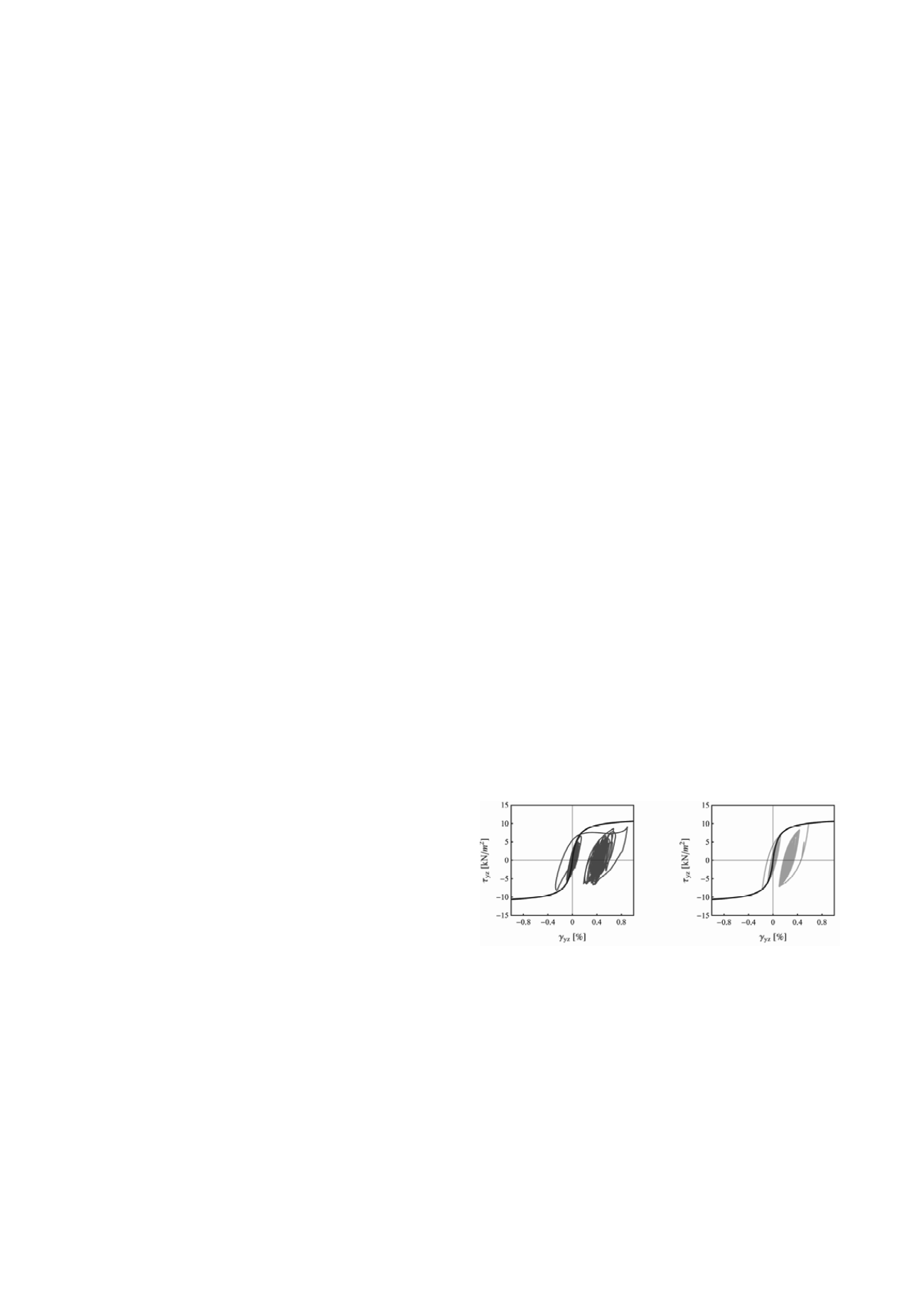
1391
1
st
General Report for TC 203: Seismic response of soils, foundations
and geotechnical structures
1
er
rapport général du TC 203 : Réponse sismique des sols, des fondations
et des ouvrages géotechniques
Semblat J.-F.
Université Paris-Est, IFSTTAR, Dept of Geotechnical Eng., Environment, Natural Hazards and Earth Sciences
ABSTRACT: This session is mainly dedicated to the seismic response and stability of soils, foundations and geotechnical structures.
The various following sub-topics are discussed: site effects and soil seismic response (strong seismic motion and seismic hazard in
urban areas), landslides (shaking table tests with vertical and horizontal loadings), in situ tests (soil penetrometric characterization,
pseudostatic load tests on piles), soil behaviour and liquefaction (Prevost vs Drucker-Prager models, response-envelopes method),
earth works stability (retaining walls and excavations, earth dams and embankments), soil improvement (stiff columns, stone
columns, soil pillows), seismic isolation techniques (seismic wave screening, isolating foundation system), piles and foundations
(performance-based Limit States Design, windmill foundations, Dynamic Hereditary creep theory), numerical modelling (3D FEM
simulations for multi-arch culverts, earth pressure coefficients on vertical rigid walls, response of a suspension bridge anchor block to
oblique-slip fault movement, dynamic behaviour of a 3D soil-foundation-building system with a seismic isolation). The findings from
these papers are synthetized in this report and the links between experimental, theoretical and numerical approaches are discussed.
RÉSUMÉ : Cette session est consacrée à la réponse sismique et la stabilité des sols, des fondations et des ouvrages géotechniques. Les
principaux thèmes abordés sont: les effets de site et la réponse sismique des sols (mouvements forts, aléa sismique en milieu urbain),
mouvements de terrain (essais sur table vibrante avec chargements sismiques vertical et horizontal), essais in situ (caractérisation des
sols au pénétromètre, essais de pieux pseudostatiques), comportement des sols et liquéfaction (modèles de Prevost et Drucker-Prager,
méthode des réponses enveloppes), stabilité des ouvrages en terre (soutènements et excavations, barrages et remblais), amélioration
des sols (colonnes ballastées, matelas de répartition), isolation sismique (écrans vibratiles, fondation isolante), pieux et fondations
(conception en performance, fondations d'éoliennes, théorie du fluage), modélisation numérique (simulations 3D par éléments finis
d'ouvrages multi-arches, coefficients de poussée-butée sur murs rigides verticaux, réponse d'un pont suspendu ancré à une mouvement
de faille oblique, réponse dynamique 3D d'un système sol-fondation-bâtiment avec isolation sismique). Les résultats des articles sont
synthétisés dans ce rapport et la complémentarité entre approches expérimentales, théoriques et numériques est discutée.
KEYWORDS: Site effects, landslides, in-situ tests, soil behaviour, liquefaction, stability, improvement, isolation, piles, modelling.
This session is mainly dedicated to the seismic response of
soils, foundations and geotechnical structures. The various
subtopics are identified in the following sections as: 1/ Site
effects and soil response, 2/ Landslides, 3/ In situ tests, 4/ Soil
behaviour/liquefaction,
5/ Earth
works
stability,
6/ Improvement, 7/ Seismic isolation, 8/ Piles/foundations,
9/ Numerical modelling. 31 papers are reviewed in this report
and the link with the various topics is detailed in Table 1. For
each paper, this table identifies the main topic by a capital bold
X
and secondary topics by lower case non-bold x.
A general discussion on all the papers and topics is proposed
in the last section.
1 SITE EFFECTS AND SOIL RESPONSE
1.1
Numerical modelling of strong seismic motion
Paper #2895 by Santisi et al. proposes a numerical approach to
model the unidirectional (1D) propagation of a three
components (3C) earthquake for seismic response analyses of
horizontal multilayer soils. A 3D nonlinear MPII constitutive
model is considered. Propagating a 3C signal induces a
multiaxial stress interaction decreasing soil strength and
increasing nonlinear effects. The nonlinear seismic response of
several Tohoku soil profiles are compared in between 1D-3C
computations (Fig.1, left) and 1D-1C case (Fig.1, right).
Figure 1. 1D-3C (left) and 1D-1C (right) seismic response for the
Tohoku event at site FKS011/FKS015: shear stress/strain loops at 2 m
(Santisi et al., #2895).
Paper #3013 by Tabatabaie et al. investigates how
stratifications and sub-layers can affect the seismic
amplification ratio. Field observations (boring, boreholes) in
Bam, Iran show some contradictions between the expected
amplifications from EC8 soil types (esp. type E) and the actual
amplification levels. To explain such a discrepancy, the authors
discuss the effect of sub-layers thickness through a detailed 1D
equivalent linear sensitivity analyses (EERA software). These
analyses show that the thickness of E, B and D type soil layers
and seismic amplification ratios are closely linked. This study
reveals the deficiencies of current earthquake codes (e.g.
average shear wave velocity) and it emphasizes the effect of
sub-layers properties (esp. very soft and very stiff ones) on
amplification ratio.
1
st
General Report for TC 203
Seismic response of soils, foundations and geotechnical structures
1
er
rapp r général du TC 203
Réponse sismique des sols, des fondations et des ouvrages géotechniques
Semblat J.-F.
Université Paris-Est, IFSTTAR, Dept of Geotechnical Eng., Environment, Natural Hazards and Earth Sciences


